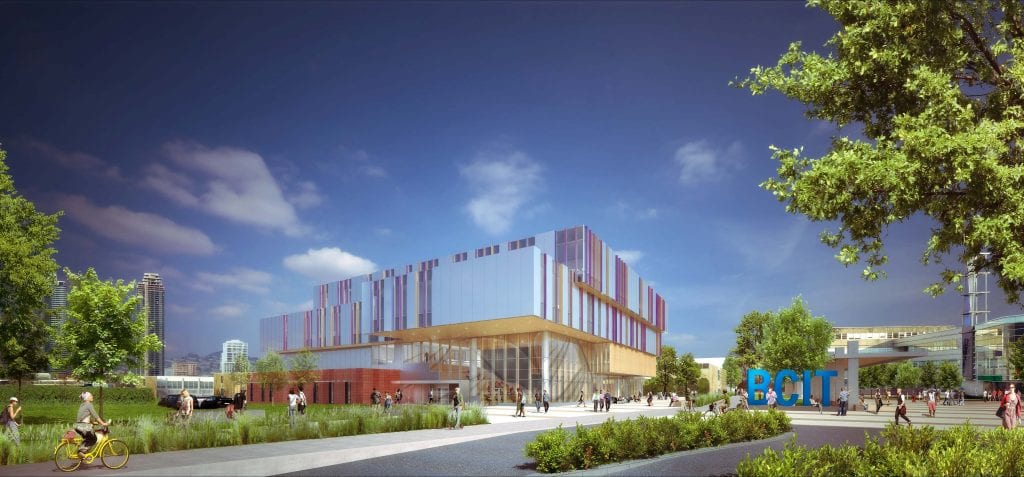Students, staff and faculty at the BCIT Burnaby Campus will soon have a new space to rest, explore and regenerate, with the opening of the Health Sciences Centre in 2021. The Health Sciences Centre will be the first building to be a part of the INSPIRE Campaign.
While BCIT has a long history of sustainable or green building design, this most recent addition is part of a broader vision for campus renewal, according to Craig Sidjak, Director of Campus Development. “It will be the most sustainable building on campus,” he says.
The building uses the WELL Standard for construction which, according to Craig, can help to set a new benchmark that integrates environmental sustainability standards alongside human health and wellbeing.
“Right from the design phase, we’ve come at it from a holistic view, and not limited this to quintessential sustainability areas like materials, energy and water,” explains Jeff Dyck, Associate Dean of the School of Health Sciences.
“A lot of those [factors] are addressed in design but the goal is to include other aspects—cultural respect, wellness, safety…in our view wellness is intrinsic to sustainability you can’t have sustainability if it isn’t congruent with wellness.”
Bringing together wellness and sustainability
According to the Canada Green Building Council, the WELL Standard is grounded in a body of medical research that treats the buildings, in which many people spend more than 90 percent of their time, as a vehicle for improving human health, from sleep patterns to psychological and emotional wellbeing. It is the first certification system to centre on the impacts of buildings on human health and wellness.
“The whole idea of wellbeing is a transcendent concept,” says Jeff. “This project is about being a net producer of wellness, and not just mitigating harm.”
“A lot of the aspects of WELL rang true with health studies,” explains Craig, “there was quite a bit of discussion around healthy food, opportunities for exercise with an emphasis on stairs, natural light and air.”
They asked themselves, says Jeff, “What if we can exemplify this in our teaching, and if it can be felt in our three-dimensional space?”

A building for the whole campus
While the teaching and learning inside the building will focus on medical lab services, nursing and radiology, with a focus on simulation, the space won’t just be for those in Health Sciences.
“We purposely designed the main floor to be open and inviting to everyone on campus,” says Craig.
“Right from the outset it was meant to have meaning for the community not just our school,” explains Jeff, who points out that the outdoor patio, student lounges and social space, along with the central location, will enable the building to serve as a gathering place for the campus community.
A collaborative process
The holistic nature of this project started at the beginning, with over ten years of consultations and iterations in the design of the building, working with key stakeholders from the school, sustainability office, facilities, and consultants.
The project team also collaborated with BCIT Indigenous Services who have been key part of the process, enabling Indigenous ways of knowing to inform the design of the building. From colour choices and building materials to traditional medicinal planting around the exterior, Jeff and Craig both see this as part of the holistic wellness approach to the design.
“In a way,” says Jeff, “[the health sciences building] constitutes a challenge for the Institute to do that much better. It’s a facility and it’s also a statement.”
Have you subscribed? Sign-up to receive the latest news on BCIT.
Note to media: If you’re interested in interviewing a spokesperson about the new BCIT Health Sciences Centre, please contact Amy Chen, 778-384-7245.

1 thought on “BCIT Health Sciences Centre: a new standard for sustainability and wellbeing”